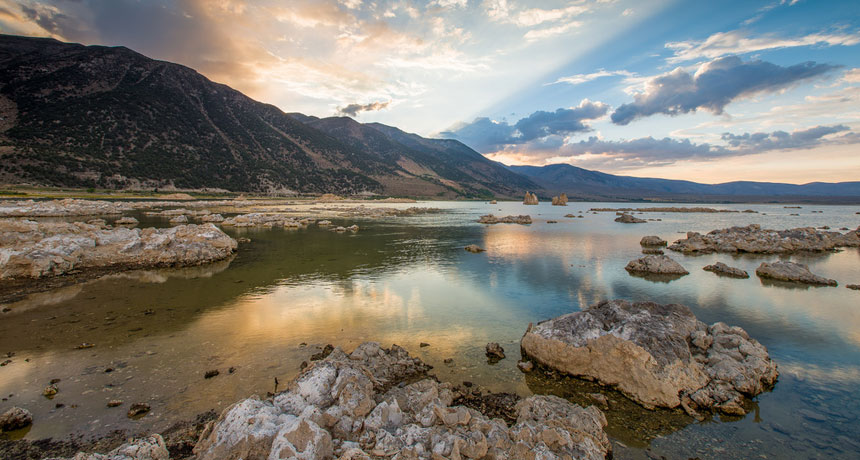
THE RARE EARTH About 22 percent of minerals exist in only one locality, including a Hazenite, a phosphate mineral named for mineralogist Robert Hazen that’s made only by microbes found in California’s Mono Lake (shown).
chris.chabot/Flickr (CC BY-NC 2.0)






